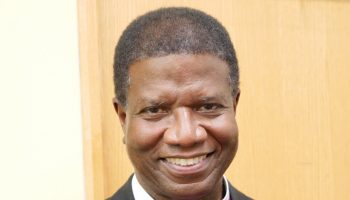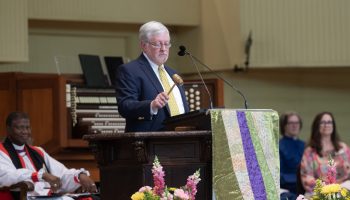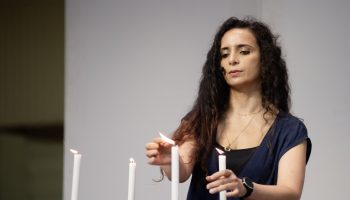
Kaitlyn Finchler
Contributing Writer
The religious landscape in the United States has seen drastic change over the last decades, with steep declines in membership. However, according to Gregory A. Smith, senior associate director of research at Pew Research Center, religion in America and the people who practice it have stabilized.
Smith will give his lecture “Trends in the American Religious Landscape” at 2 p.m. today in the Hall of Philosophy for the Week Four Interfaith Lecture Series theme “Who Believes What, and Why That Matters — in association with Pew Research Center.”
“Over the last five or six years or so, what we see is more continuity than change in American religion,” Smith said. “That’s very interesting because it’s just a departure from what we’ve seen over the longer term.”
Back in the early 1990s, Smith said the number of Christian Americans would have been close to 90%. Over the last 30 to 35 years, that has been trending downward and now stands around 6% to 10%, which Smith said is a “pretty significant decline.”
“But, over the last five or six years, there’s been no change,” he said.
Religion is a “really important” part of people’s lives, Smith said. At Pew Research Center, Smith said, part of its mission is to understand current trends in American society.
“People tell us religion is a very important part of their lives, so it’s an important thing for us to monitor,” he said. “On top of that, we can see in the data very clearly that religion is connected to all kinds of other important things.”
How people vote in elections, how people get engaged in their neighborhoods, communities and broader civic life, and their ideas and patterns of family formation can all be attached to religion, Smith said.
“We can see, additionally, that religion is connected (in) all kinds of important ways to all kinds of other aspects of American life,” he said. “Even beyond that, the same thing is true of non-religion. … People who are not religious also tend to have distinctive characteristics when it comes to their approach to civic life, their approach to politics and more.”
Some of the points Smith will touch on include the demographic forces “that have undergirded” some of the religious changes and religious switching among Americans and how that has impacted the country’s religious composition.
“There’s a lot of coverage of American religion in the media,” he said. “We read a lot of different accounts about what’s happening in American religion, and the forces and the factors that are underneath those religious trends can be pretty complicated.”
With these “complicated” factors in mind, Smith said he wants Chautauquans to take away new or additional considerations when thinking about religious change.
As his lecture will set the tone for the week, he said he hopes the audience comes away with a better understanding of the current religious characteristics of the United States and a deeper knowledge about how it has changed over time.
“I hope (the audience) will take away from (the lecture) some ideas about things to consider and things to look for when considering religious change,” Smith said.




